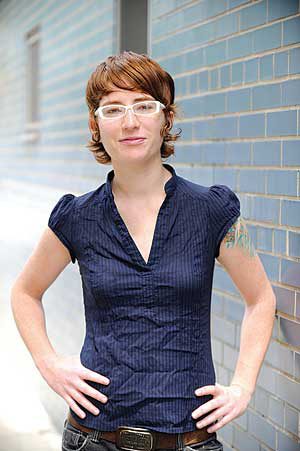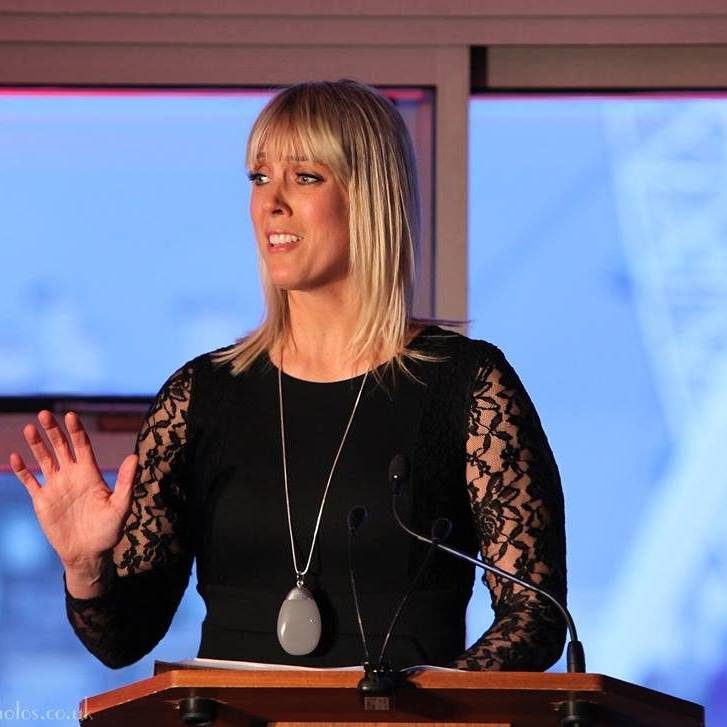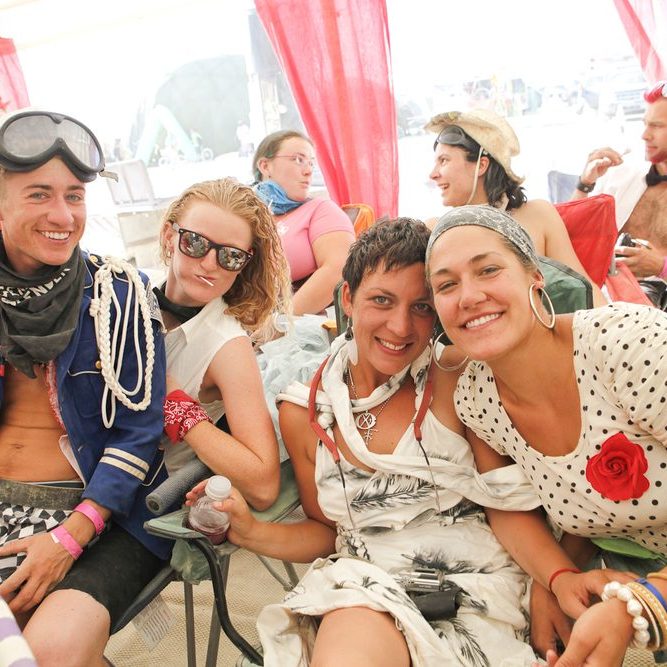
The acclaimed filmmaker discusses her first feature-length documentary, “Off and Running.”
A favourite at last year’s Tribeca Film Festival, lesbian filmmaker Nicole Opper’s brilliant and heart-rending documentary, Off and Running, follows three years in the life of an African American teenage girl named Avery. Raised by two white Jewish lesbians and the sister of two adopted brothers—one of mixed race and one of Korean descent—Avery’s family is as loving as it is diverse. However, as she begins to question her own identity, she feels the need to find out more about her roots. When Avery contacts her birth mother, tensions in her family arise, and in the process, she discovers that true family is not always based on blood relations. Awarded a post-production grant by the National Black Programming Consortium for its celebration of the cultural heritage of African Americans, this poignant coming of age film explores themes of race, identity and family.
What drew you to Avery’s story? How did you meet her?
I have been teaching filmmaking to young people part-time for the last 10 years, and Avery was a student in my very first class. She was an impossible student and I was a terrible teacher. We’ve both improved over the years. Early on I discovered that Avery was adopted by lesbians and became curious about her family’s story. At the time I was 21 and had never met gay parents before, so her family gave me a window into the possibilities of my own future.
The film was written by you and Avery. What was it like to collaborate with the star of the film in this way?
This was very organic because we began our relationship as teacher and student in one sense. In another sense, it was born out of the crisis. About halfway through filming, Avery disappeared and broke contact with most of the people in her life, including me. This lasted for two months and tore me apart, but one day she showed up on my doorstep ready to continue with the film. I told her I wanted her to start watching the footage we had shot and offer her feedback.
Basically, I said, “This is your story and you left it for two months. Now it’s time to come back and own it for good.” And that’s exactly what she did. Day after day, through her reactions to the footage and the personal voice-over she wrote herself, Avery took ownership of the film. Her troubles didn’t go away, but her commitment to the project strengthened immeasurably as she discovered her own power as a storyteller. She was honoured by the Writers Guild of America with the Best Documentary Screenplay award. I know she takes great pride in that. The verité footage continued to be spontaneous, but because of this process, the viewer can begin to understand Avery’s internal conflict.
At the end of the film, we see Avery beginning to get closer to her adoptive parents again. Were there more emotional moments that we didn’t necessarily see on film?
Avery’s parents were incredibly generous to let us into their home and allow us to capture anything at all. But they understandably became more vigilant the more things spun out of control. I appreciated this because your limitations invariably become a part of your craft. In the scene in which Avery and Prince go home for Rosh Hashanah at the end of the film, her parents asked me to film up to the front door but to then turn the camera off and come inside. At first, I was terribly disappointed that I couldn’t change their minds about this, but now I prefer that we just glimpse the warmth of that home through the window and imagine what will happen next.
The film does a wonderful job of showing the complex emotions involved in trying to find one’s biological parents, and even though the audience might not come from the same situation, Avery is very relatable. Why do you think this?
Thank you for saying so. I think this is really a tribute to Avery’s strength and generosity in sharing herself so completely on camera. Ultimately the film is about figuring out who you are and what your place is in the world. Avery’s adoption search makes up one aspect of this universal experience, and I think that’s what people connect to regardless of their background walking into the theatre.
In the film, Avery is a black teenager being raised by two Jewish lesbians. Was this diversity one of the aspects that attracted you to their story?
This is an interesting question. Because I didn’t begin with an idea and then go cast it, I’m not sure I’ll ever be able to pick apart the elements that all converged to make this the story I wanted to commit three years of my life telling. It began with a girl—a mischievous, charming, exuberant and wild-eyed girl who captured my heart and my imagination. The rest just followed.
Do you know if Avery ever got in touch with her biological mother? Do you still keep in touch with Avery?
Avery has not had contact with her mother since leaving for college. She is resolute in her decision to wait until she finishes school so she can focus on the things she has control over. But she is absolutely still interested in having a reunion one day. We speak often, mostly through Facebook and email now that I’m living in Mexico, but Avery is someone I will have in my life for as long as possible. She has had a profound impact on me and the way I look at the world, and I feel very lucky to be her friend.
What led you to documentary filmmaking? Are there any particular directors that have inspired you?
I have known I wanted to make documentaries since I was a teenager. It’s more emotional than intellectual—this was simply the form of storytelling that put a fire in my belly. I was lucky to have an exceptional array of filmmaker-mentors early on who inspired me and pushed me to chase this dream: Sam Pollard, Macky Alston, Judith Helfand and Peter Miller to name just a few. There are narrative filmmakers I feel strongly about as well but they all work in an improv-based documentary style.
Can you tell us anything about your current project?
Right now I’m working on my second project about non-traditional families built through love. I’ll follow a year in the life of several resilient, tough and hilarious boys growing up in a sustainable group home in Mexico. They were all abandoned to the streets for various reasons. Some have severed ties with their parents altogether, while others visit them in prison or communicate with them while they work in U.S., but they are all wards of the state and brought to this home, which is entirely self-sufficient and environmentally sustainable. The boys make handmade soap and organic goat cheese to sell and support themselves while they prepare for college and work. It’s a very successful social experiment and a beautiful family in its own right, and now the staff is setting out to create another home just like it, but this one will be for girls.


